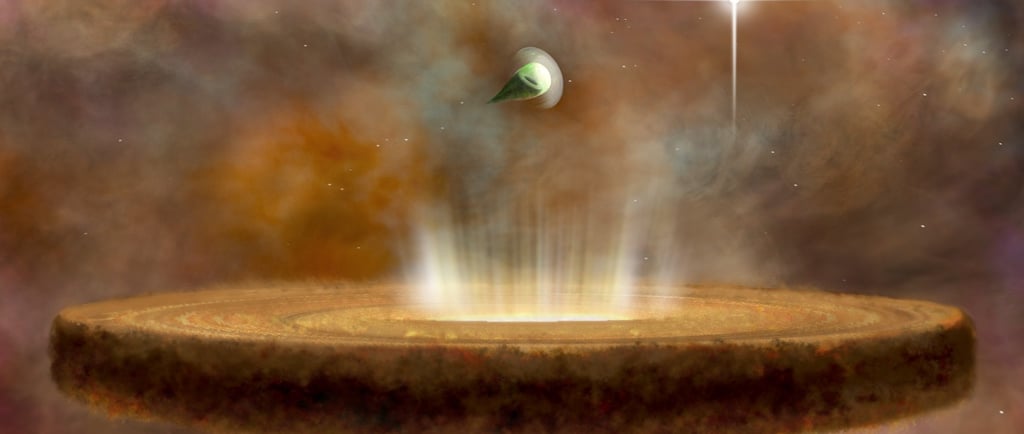Proplyd 181-825: A Closer Look at Protoplanetary Disks


An Introduction to Proplyds
The cosmos holds many wonders, and among these, protoplanetary disks, often referred to as proplyds, are particularly fascinating. These disks of ionized gas and dust are where stars and planets begin their formation. The Orion Nebula, a stellar nursery located about 1,344 light-years from Earth, is home to 42 known proplyds, each playing a vital role in our understanding of spatial dynamics and stellar evolution.
The Discovery of Proplyd 181-825
In 2009, with the help of the Hubble Space Telescope, scientists discovered the proplyd 181-825, a notable member of this celestial family. Proplyd 181-825 has garnered attention due to its proximity to the brightest star in the Orion Nebula, known as Theta 1 Orionis C. The brightness of this proplyd, coupled with its unique interactions with stellar wind, makes it an ideal subject for astronomers seeking to unravel the complexities of star formation.
Interactions with Stellar Winds
One of the most intriguing characteristics of proplyd 181-825 is its interaction with the stellar wind emitted by Theta 1 Orionis C. This massive star generates strong shock waves as it expels material into space, creating a distinct environment around the proplyd. The shock wave can be observed surrounding the proplyd, clearly indicating the dynamic processes at play in the region. Such interactions are crucial in influencing the accretion processes, determining how well materials can coalesce to form new stars and planets.
Furthermore, the intense radiative pressure from Theta 1 Orionis C acts on the surrounding gas and dust within the disk, impacting the formation rates of new celestial bodies. As researchers study these interactions, they gain invaluable insights into the life cycle of stars and the conditions necessary for planetary formation.
Conclusion
In summary, the exploration of proplyd 181-825 within the Orion Nebula provides an excellent opportunity to study the intricate dynamics of protoplanetary disks and their formative processes. As one of the bright proplyds located near Theta 1 Orionis C, its characteristics reveal crucial information about the role of stellar winds and shock waves in star and planet formation. Continuing research in this area is essential, as it holds keys to understanding not only the origins of our solar system but also those of distant worlds yet to be discovered.
